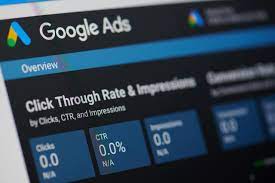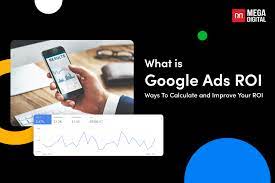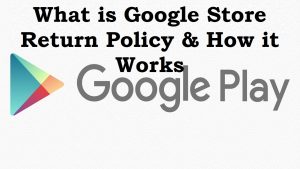[ad_1]
Maximizing ROI: How to Craft Effective Google Ads for Your Business
In today’s digital age, having a strong online presence is crucial for the success of any business. One powerful tool that can help drive traffic and increase sales is Google Ads. Google Ads, formerly known as Google AdWords, allows businesses to display their advertisements in various formats on Google’s search engine results pages, as well as on partner websites. Crafting effective Google ads can significantly impact your business’s return on investment (ROI), so it’s essential to understand the key strategies and techniques to ensure success.
1. Identify Your Target Audience:
Before creating your Google Ads campaign, it’s crucial to identify your target audience. Understanding who your ideal customers are and what they are searching for will help tailor your ads to match their needs. Conduct thorough research to determine demographics, interests, and search behavior. Utilize Google Analytics and other tools to gather data on your existing audience and potential customers. By having a clear picture of your target audience, you can create ads that resonate with them and encourage clicks.
2. Choose the Right Keywords:
Keywords are the foundation of a successful Google Ads campaign. They are the words or phrases that customers type into the search bar when looking for products or services. Conduct keyword research to identify relevant and high-performing keywords for your business. Tools like the Google Keyword Planner can help you find popular keywords, estimate their search volume, and determine their competitiveness. Focus on long-tail keywords, which are more specific and have higher chances of converting into sales.
3. Create Compelling Ad Copy:
Once you have identified your target audience and keywords, it’s time to create compelling ad copy. Your ad copy should be concise, engaging, and persuasive. Highlight the unique selling propositions of your products or services, and use powerful language to capture the attention of potential customers. Include a clear call-to-action (CTA) that encourages users to take the desired action, such as visiting your website or making a purchase. Split-test different variations of your ad copy to discover the most effective message.

4. Optimize Landing Pages:
Driving traffic to your website is only one part of the equation. The landing page is where visitors will ultimately decide whether to convert or bounce. Ensure that your landing page aligns with your ad copy and provides a seamless user experience. Optimize the page’s loading speed, make it mobile-friendly, and keep the design clean and user-friendly. Include a prominent CTA and relevant information that addresses your customers’ pain points. Continuously test and refine your landing page to maximize conversions.
5. Utilize Ad Extensions:
Ad extensions are additional pieces of information or features that can be added to your Google Ads. They help enrich your ads and provide more value to potential customers. Some common ad extensions include call extensions, site link extensions, location extensions, and review extensions. Ad extensions can improve your ad’s visibility, provide more relevant information, and increase your click-through rate (CTR). Experiment with different ad extensions to see which ones resonate best with your audience.
6. Analyze and Optimize:
To maximize ROI, it is vital to monitor and analyze the performance of your Google Ads campaign. Use Google Ads’ built-in reporting tools and Google Analytics to track key metrics such as click-through rate, conversion rate, cost per click, and return on ad spend. Identify high-performing keywords, ad groups, and ads, and allocate more resources to them. Continuously test and tweak your campaign by making incremental changes based on data-driven insights. Regularly refine your targeting strategy, ad copy, and landing pages to improve performance and increase ROI.
7. Leverage Remarketing:
Remarketing is a powerful strategy that can help you re-engage potential customers who have previously interacted with your website or shown interest in your offerings. By using targeted ads, you can reach out to people who have already demonstrated some level of interest in your business. Remarketing allows you to stay top of mind, reinforce your brand message, and increase the likelihood of conversion. Implement remarketing campaigns to maximize ROI and boost your overall marketing efforts.
Mastering the Art of Creating a Professional Business Email Account on Google
Crafting effective Google Ads requires a strategic approach, continuous optimization, and a deep understanding of your target audience. By following these strategies and techniques, you can create impactful ads that resonate with your potential customers, drive qualified traffic to your website, and ultimately maximize your ROI. Stay proactive, monitor your campaign’s performance, and be open to experimentation and optimization. With the right tactics and a data-driven mindset, Google Ads can become a valuable asset for your business’s success in the digital landscape.
[ad_2]




